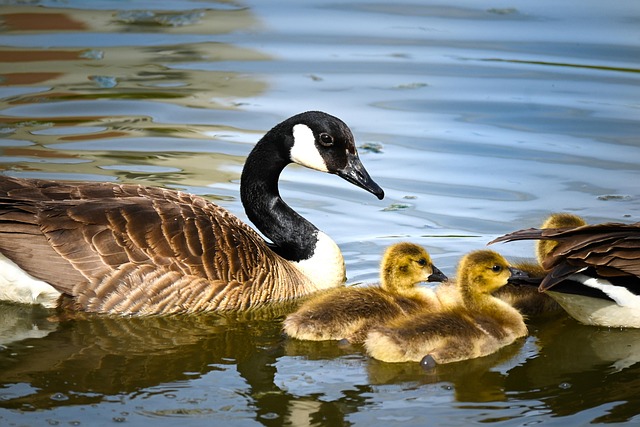Geese populations have surged in urban and rural areas, leading to challenges like vegetation damage, disease spread, and safety hazards. Traditional methods are ineffective, prompting the rise of specialized commercial geese control services offering modern, humane solutions. These services employ advanced technology, habitat manipulation, and expert knowledge to manage overpopulation while minimizing environmental impacts. A collaborative approach involving community engagement, regulatory frameworks, and professional expertise is essential for effective goose management in diverse settings.
Geese have become a ubiquitous sight in urban and rural landscapes, but their increasing populations can lead to significant environmental and health concerns. This article explores comprehensive, long-term solutions for efficient goose control. We delve into understanding goose behavior and its impact on various environments, comparing traditional and modern methods. The focus is on the critical role of commercial geese control services in implementing sustainable practices. Additionally, we examine community engagement and regulatory frameworks essential for effective, long-lasting goose management strategies.
Understanding Geese Behavior and Their Impact on Urban and Rural Environments
Geese have become a prevalent sight in urban and rural areas alike, but their increasing populations can lead to significant challenges. Understanding their behavior is crucial for implementing effective long-term solutions. These birds are highly social creatures, often forming large flocks that migrate over vast distances. They prefer open spaces with water sources, making parks, ponds, and agricultural fields ideal habitats in urban and rural settings. This affinity for water bodies can lead to issues when geese decide to make these areas their homes, as they may cause damage to vegetation and even pose health risks by spreading diseases.
In urban environments, commercial geese control services have become increasingly important to address these problems. Geese can be a nuisance, leaving behind feces that contaminate water sources and damage infrastructure. Moreover, they can create safety hazards by landing on roads or in crowded spaces. In rural areas, while their presence may be more accepted, excessive grazing can negatively impact local agriculture. Therefore, implementing strategies to manage and control geese populations is essential for maintaining a harmonious balance between these birds and the urban and rural environments they share.
Traditional vs. Modern Geese Control Methods: A Comparative Analysis
In the realm of geese management, traditional methods have long been the go-to approach, often involving scarecrows, noise makers, and chemical repellents. While these tactics may offer temporary relief, they are not considered sustainable or environmentally friendly solutions. In recent years, a shift towards modern, innovative techniques has gained traction, offering more effective and humane alternatives. One such method is the integration of advanced technology, such as motion-activated devices and automated noise systems, which can deter geese without causing them harm.
Modern approaches also include the strategic use of habitat manipulation and land management practices. Commercial geese control services now employ experts who understand the behavior and ecology of these birds, designing tailored solutions that address specific challenges in both urban and rural settings. By combining scientific knowledge with compassionate methods, these contemporary techniques provide long-term solutions that not only reduce goose populations but also minimize potential environmental impacts.
The Role of Commercial Geese Control Services in Implementing Effective Long-Term Solutions
In urban and rural settings alike, effective goose management is a complex challenge that requires tailored strategies. Here, commercial geese control services play a pivotal role in implementing long-term solutions. These professionals offer specialized knowledge and expertise, employing various humane methods to address goose overpopulation and related issues like damage to landscapes and agricultural concerns.
By leveraging advanced techniques, commercial geese control services can humanely reduce goose numbers while mitigating environmental impact. They often employ strategies such as habitat modification, deterrents, and even relocation programs. Moreover, these services provide ongoing monitoring and adaptive management, ensuring that solutions remain effective over time and adapting to dynamic environmental conditions.
Community Engagement and Regulatory Frameworks for Sustainable Goose Management Practices
In both urban and rural settings, effective goose management requires a multifaceted approach that prioritizes community engagement and robust regulatory frameworks. Involving local residents, business owners, and stakeholders in the decision-making process is essential for developing sustainable practices. This collaborative effort ensures that solutions are tailored to address specific challenges while fostering a sense of collective responsibility. By organizing public forums, conducting surveys, and encouraging open dialogue, communities can gather valuable insights into goose behavior, habitat preferences, and potential conflict areas.
Regulatory frameworks play a pivotal role in supporting commercial geese control services. Local governments and relevant authorities should establish clear guidelines and regulations to manage goose populations humanely and efficiently. These rules could include permitted methods for goose deterrence and removal, specific seasons for control activities, and guidelines on the use of control agents or contractors. Well-defined legal structures not only ensure ethical practices but also provide a framework for resolving disputes and promoting long-term, sustainable solutions to goose management in both urban and rural areas.
Implementing long-term solutions for goose control requires a multifaceted approach. By understanding goose behavior and their environmental impact, we can effectively compare traditional to modern methods, leveraging the expertise of commercial geese control services. Community engagement and robust regulatory frameworks are pivotal in fostering sustainable goose management practices, ensuring balance between human habitats and these feathered visitors. Through collaborative efforts and innovative strategies, we can achieve harmonious coexistence while mitigating the challenges posed by urban and rural goose populations.
